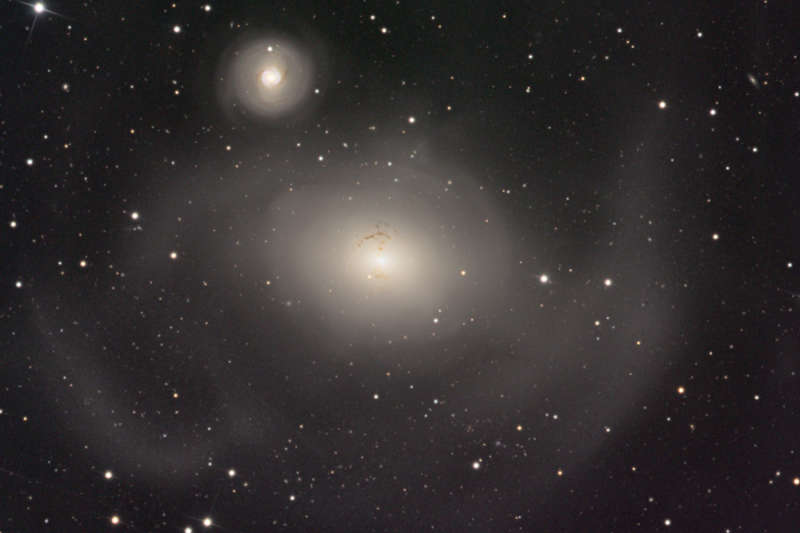
|
Credit & Copyright: Martin Pugh
Explanation:
Astronomers turn detectives when trying to
figure out the cause of startling sights like
NGC 1316.
Their investigation indicates that
NGC 1316
is an enormous
elliptical galaxy
that started, about 100 million years ago, to devour a smaller
spiral galaxy neighbor,
NGC 1317, just above it.
Supporting evidence includes the dark
dust lanes
characteristic of a
spiral galaxy,
and faint swirls of stars and gas visible in this
wide and deep image.
What remains unexplained are the unusually small
globular star clusters,
seen as faint dots on
the image.
Most elliptical
galaxies have
more and brighter globular
clusters than
NGC 1316.
Yet the observed
globulars are too old to have been
created by the recent
spiral collision. One
hypothesis is that these
globulars
survive from an even earlier galaxy
that was subsumed into
NGC 1316.
|
January February March April May June July August September October November December |
| ||||||||||||||||||||||||||||||||||||||||||||||||
NASA Web Site Statements, Warnings, and Disclaimers
NASA Official: Jay Norris. Specific rights apply.
A service of: LHEA at NASA / GSFC
& Michigan Tech. U.
Based on Astronomy Picture
Of the Day
Publications with keywords: NGC 1316 - colliding galaxies
Publications with words: NGC 1316 - colliding galaxies
See also:
- APOD: 2025 May 7 Á Galaxy Wars: M81 versus M82
- APOD: 2024 July 30 Á Arp 142: Interacting Galaxies from Webb
- APOD: 2023 September 25 Á Arp 142: The Hummingbird Galaxy
- APOD: 2023 January 23 Á The Colliding Spiral Galaxies of Arp 274
- Galaxy Wars: M81 and M82
- NGC 1316: After Galaxies Collide
- NGC 4676: When Mice Collide
